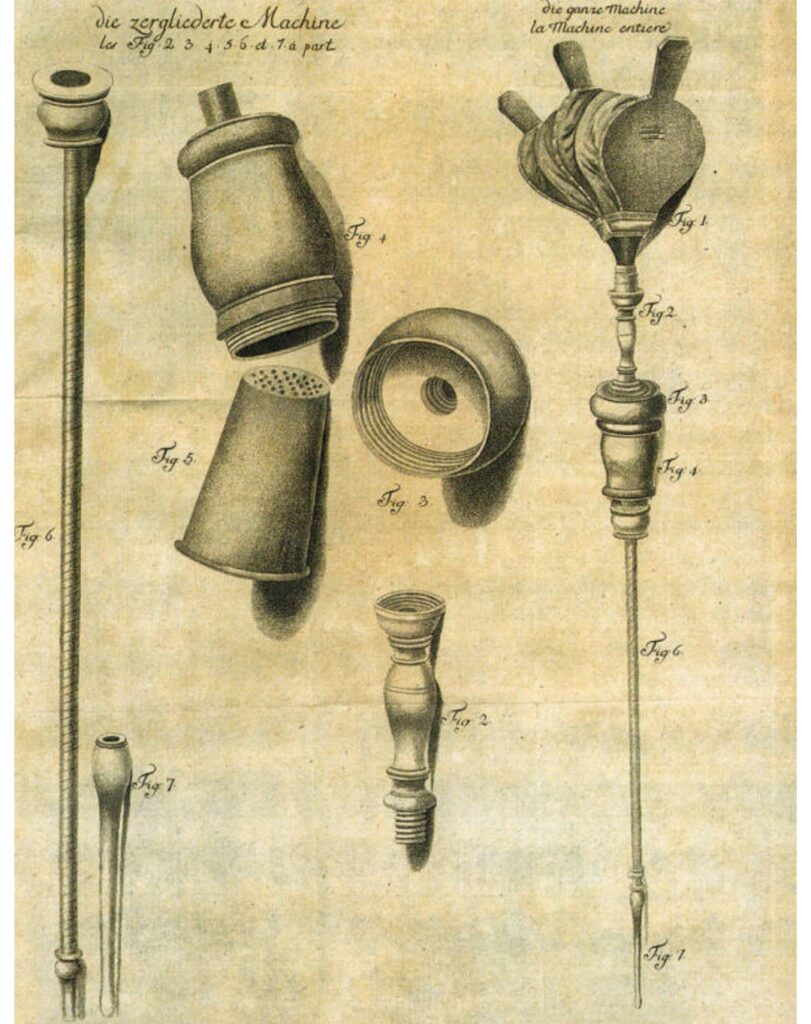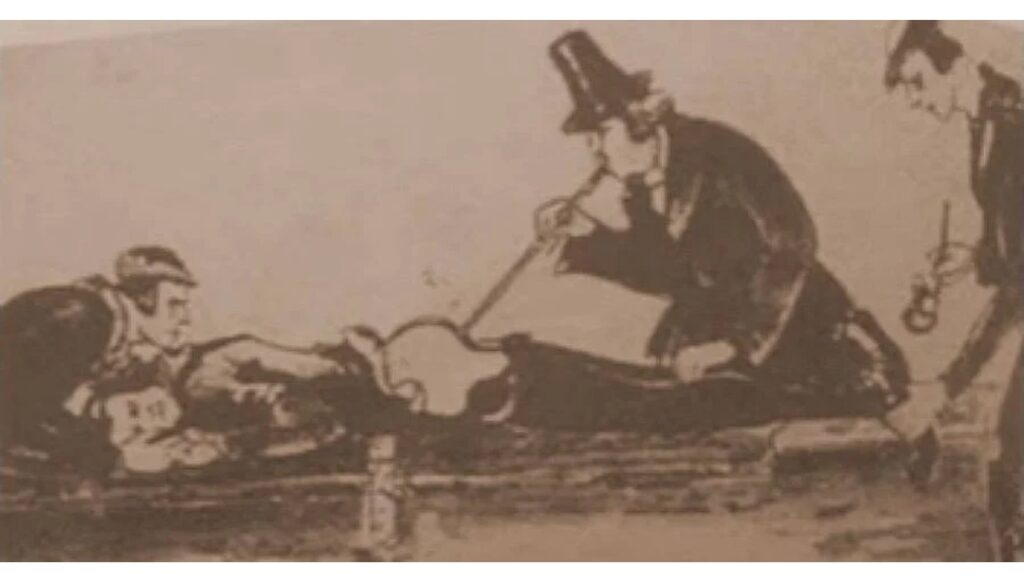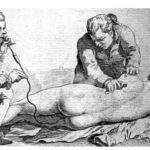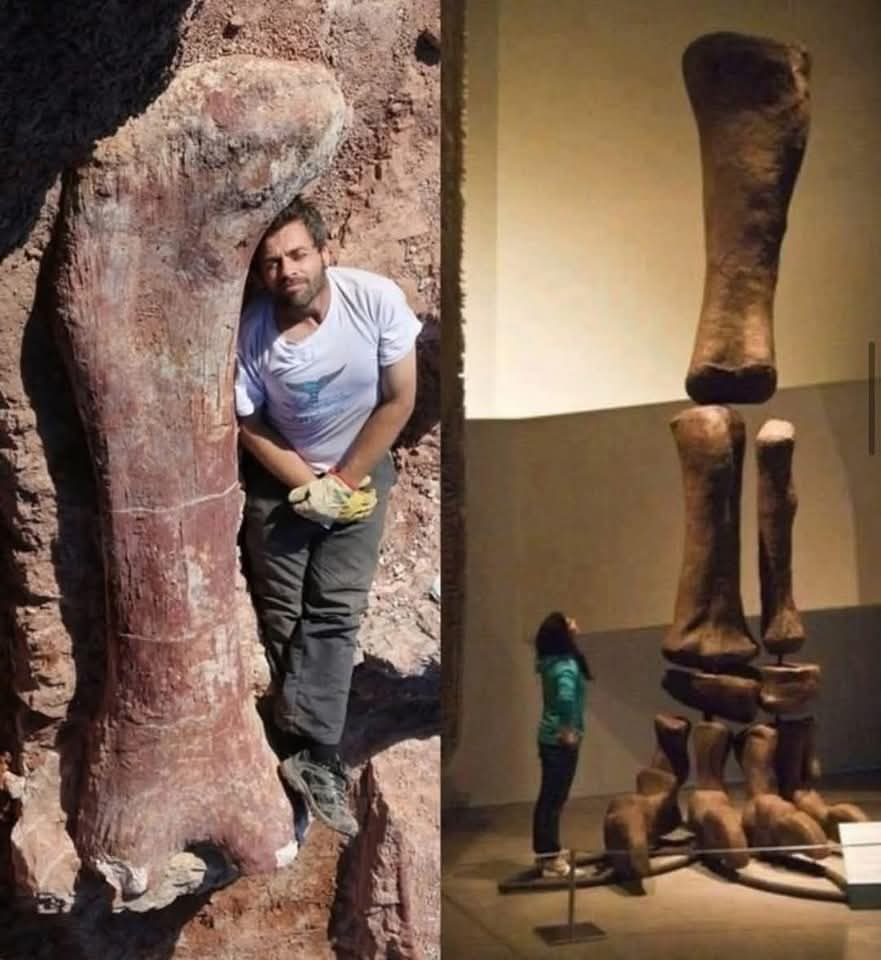Discover the shockingly literal and thoroughly disturbing 18th-century medical origins of the idiom “blowing smoke up your ass.”
“Oh, you’re just blowing smoke up my ass,” is something you might hear someone say when they think you’re just telling them what they want to hear. But in 18th-century England, blowing smoke up your ass was an actual medical procedure, and no, we aren’t kidding.
According to Gizmodo, one of the earliest reports of such a practice took place in England in 1746, when a woman was left unconscious after nearly drowning.
Her husband allegedly took the suggestion of administering a tobacco enema to revive her, a practice that was rising in popularity at the time as a possible answer to the frequent, local instances of drowning.
Left with little choice, the man took a tobacco-filled pipe, inserted the stem into his wife’s rectum, and, well, blew a bunch of smoke up there. As strange as it may sound today, it reportedly worked, the hot embers of the tobacco leaf jolting the wife back into consciousness, and the practice grew quickly from there.
But where did the idea to use tobacco as a form of medicine come from? Indigenous Americans, who used the plant to treat various ailments, invented what we refer to as the tobacco enema. English Botanist, physician, and astrologer Nicholas Culpeper borrowed from these practices to treat pain in his native England with methods including enemas to treat inflammation as a result of colic or a hernia.
Years later, English physician Richard Mead would be among the earliest proponents of using the herbal enema as a recognized practice and helped bring its use, however short-lived, into mainstream culture.
By the late 1700s, the blowing smoke had become a regularly applied medical procedure, mostly used to revive people thought to be nearly deceased, usually drowning victims. The process was so common, in fact, that several major waterways kept the instrument, consisting of a bellows and flexible tube, nearby in case of such emergencies.
The tobacco smoke was believed to increase the heart rate of the victim and encourage respiratory functions, as well as “dry out” the insides of the waterlogged individual, making this method of delivery more preferred than breathing air directly into the lungs via the mouth.
Before the implementation of an official instrument, tobacco enemas were typically administered with a standard smoking pipe.
This proved to be an impractical solution as the stem of a pipe was much shorter than the tube of the instrument that would come later, making both the spread of diseases such as cholera and the accidental inhalation of the contents of the patient’s anal cavity, an unfortunate yet common possibility.
With the tobacco enema’s rise in popularity in full swing, London doctors William Hawes and Thomas Cogan together formed The Institution For Affording Immediate Relief To Persons Apparently Dead From Drowning in 1774.
The group was later named the much simpler Royal Humane Society, a charitable organization that “grants awards for acts of bravery in the saving of human life and, also, for the restoration of life by resuscitation.” It is still in operation today and is now sponsored by the Queen of England.
The practice of awarding life-saving citizens has been a hallmark of the society since its inception. Back then, anyone known to revive a drowning victim was awarded four guineas, equal to around $160 today.
Blowing smoke, of course, is no longer in use today. However, the tobacco enema had a good run during the 18th century, and its usage even spread to treat additional ailments such as typhoid, headache, and stomach cramping.
But with the 1811 discovery that tobacco is actually toxic to the cardiac system, however, the popularity of the practice of tobacco smoke enemas dwindled quickly from there.














Leave a Reply